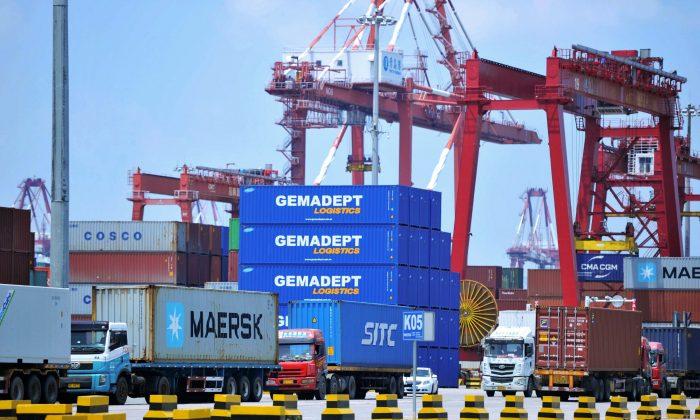BEIJING/WASHINGTON—The United States and China escalated their acrimonious trade war on Aug. 23, implementing punitive 25 percent tariffs on $16 billion worth of each other’s goods, even as mid-level officials from both sides resumed talks in Washington.
The world’s two largest economies have now slapped tit-for-tat tariffs on a combined $100 billion of products since early July, with more in the pipeline.
The latest tariffs kicked in on both sides as scheduled, at 12:01 p.m. in Beijing.
The tariffs, scheduled weeks ago, did not interfere with the start of the second day of trade talks in Washington led by Chinese Commerce Vice Minister Wang Shouwen and David Malpass, the U.S. Treasury undersecretary for international affairs.
Wang, asked by a Reuters reporter how the talks were progressing, declined to comment as he and his delegation entered the U.S. Treasury building in the morning on Aug. 23.
U.S. President Donald Trump has threatened to put duties on almost all of the more than $500 billion of Chinese goods exported to the United States annually unless Beijing agrees to sweeping changes to its intellectual property practices, industrial subsidy programs, and tariff structures, and buys more American goods.
Semiconductors, Plastics Hit
Washington’s latest tariffs apply to 279 product categories, including semiconductors, plastics, chemicals, and railway equipment, that the Office of the U.S. Trade Representative has said benefit from Beijing’s “Made in China 2025” industrial plan to make China competitive in high-tech industries.China’s list of 333 U.S. product categories hit with duties includes coal, copper scrap, fuel, steel products, buses, and medical equipment.
‘We Have More Bullets’
“They’re not going to give that up easily. Naturally, they'll retaliate a little bit,” U.S. Commerce Secretary Wilbur Ross said on CNBC on Aug. 22 at a Century Aluminum smelter in Kentucky that has benefited from Trump’s aluminum tariffs.“But at the end of the day, we have many more bullets than they do. They know it. We have a much stronger economy than they have, they know that too,” Ross said.
Economists reckon that every $100 billion of imports hit by tariffs would reduce global trade by around 0.5 percent.
They have assumed a direct impact on China’s economic growth in 2018 of 0.1 to 0.3 percentage points, and somewhat less for the United States, but the impact will be bigger next year, along with collateral damage for other countries and companies tied into China’s global supply chains.
Trump on Aug. 20 told Reuters in an interview that he did not “anticipate much” from this week’s talks.






Friends Read Free